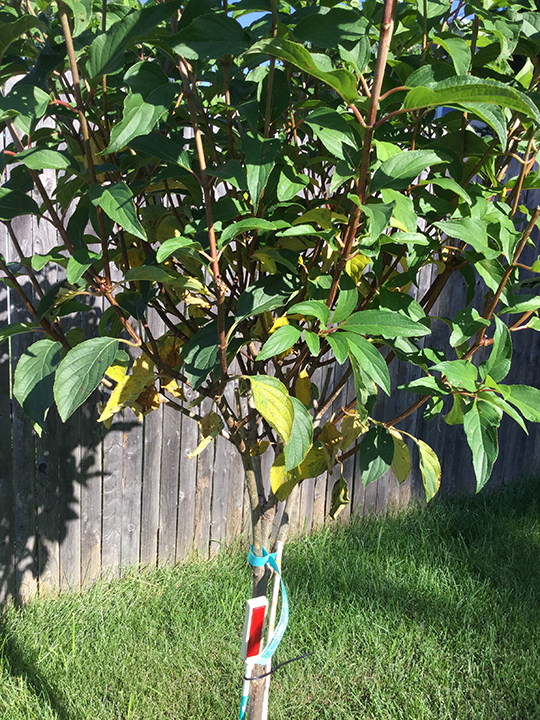Rumored Buzz on Hydrangea Leaves Turning Yellow
Rumored Buzz on Hydrangea Leaves Turning Yellow
Blog Article
Hydrangea Leaves Turning Yellow Fundamentals Explained
Table of ContentsMore About Hydrangea Leaves Turning YellowNot known Details About Hydrangea Leaves Turning Yellow Hydrangea Leaves Turning Yellow Things To Know Before You Get ThisTop Guidelines Of Hydrangea Leaves Turning YellowHydrangea Leaves Turning Yellow Can Be Fun For AnyoneNot known Factual Statements About Hydrangea Leaves Turning Yellow
One possibility is that the plant is not getting enough sunshine. During the wintertime months, the days are much shorter, and the sunlight is not as extreme, so make certain to position your Hydrangea in a place where it will access the very least six hours of sunlight each day. One more reason for Hydrangea yellow leaves in wintertime might be as well much water.Lastly, the leaves could be turning yellow due to temperature level stress. Hydrangeas like cooler temperature levels, so if the plant is in a spot that obtains also hot or too cool, the leaves will transform yellow. If you believe temperature stress may be the concern, try moving your Hydrangea to a various place or protecting it from the aspects with a cloth cover.
New development will certainly be observed in early spring, when you'll observe environment-friendly foliage growing from stems that may have shown up dead. If your leaves are transforming brown in spring or summer season, there are likely various other aspects at play (Hydrangea Leaves Turning Yellow). The precise reasons rely on the variety and their growing problems, but generally, brownish hydrangea leaves are an indication of dehydration and wilting in the heat
Hydrangea Leaves Turning Yellow - An Overview

Wilting is triggered by absence of moisture, indicating there are a couple of great techniques to make use of to avoid this from occurring. Give your hydrangeas a healthy glug of water every few days when the temperature levels are climbing up high, and treat the soil to much better preserve wetness. After sprinkling, a bit of compost around the base of each plant need to assist with this by keeping moisture in the dirt.
This disrupts fungis spores from settling. "The Botrytis fungus flourishes in cool and wet problems, so stay clear of bathing the entire plant when watering and just water at the origins," shares Roy Nicol, a Master Horticulturist. If you have actually missed out on the opportunity for prevention and are managing an infection you should get rid of all dead or severely contaminated fallen leaves from the plant and destroy them to stop further spread.
Getting The Hydrangea Leaves Turning Yellow To Work
As a general guideline, we recommend getting rid of fallen leaves when they are 50% brown or higher. While browning created by any kind of factor can't be turned around, taking the corrective action described above will certainly motivate the plant to grow brand-new leaves so the harmed he said fallen leaves either diminish naturally or can be removed by the garden enthusiast.
Hydrangeas need to be watered just when the top couple of inches of soil are dry, and need to be provided a complete soaking each time. Underwatered hydrangeas are most likely to have yellow, wilting, and drooping fallen leaves. Boost the frequency and amount of watering for your bush to help solve this problem. Hydrangeas choose rather damp (but not soggy) dirt, so provide the roots a great saturating and enable water to be soaked up into the dirt before using more.
The visite site way you take care of hydrangea leaves transforming yellow depends on the crucial issue triggering the yellow fallen leaves. This can be hard to determine, once you do you will have the ability to change your plant care accordingly to take care of the problem. As mentioned before, an usual concern with hydrangeas is nutrient deficiencies.
The smart Trick of Hydrangea Leaves Turning Yellow That Nobody is Talking About
During the top growing season, you ought to sprinkle at a rate of about 1 inch per week. If you are stressed over not properly sprinkling your hydrangeas, there are a couple of points you can do. Including mulch to the base of the plants over the origin zone help to manage the temperature level around the bush and maintain water in the soil.
You can acquire and mount basic watering globes. Sprinkling globes hold water in them and gradually release this water into the soil as the ground comes to be completely dry. Merely load the world with water, stick the spout right into the soil within the root area near the base of the plant, and leave it in area until all the water is gone.
If it is too severe, some plants will never ever recuperate from transplant shock and will certainly proceed to decrease up until they pass away. Minimize transplant shock by including as many roots as possible when digging up your plant to move it. Make certain to give more water than common in the weeks adhering to planting to help your plant recuperate click site and grow brand-new origins.
Facts About Hydrangea Leaves Turning Yellow Revealed
To avoid spreading out fungal diseases, be certain to thouroughly clean and disinfect any kind of pruning devices before and after use. You can try to flush the origins with water to eliminate excess fertlizer.
Your hydrangea plant favors well-drained, damp dirt. If the pot has poor water drainage, or your soil is swamped, the leaves will begin to turn yellow. Overwatering makes the dirt soggy (Hydrangea Leaves Turning Yellow). Flooded and soaked soil can bring about stunted growth, leaf discoloration, and, worst of all, rot fungal conditions. Although over-watering can be unsafe, under-watering is not an option either.
If you don't water your hydrangea plant for even more than a week, the fallen leaves will start transforming yellow. Fungal illness that strike the plants tend to show indications on the roots and the leaves of the plant. One of these conditions is root rot, which makes it hard for the plant to feed properly.
Hydrangea Leaves Turning Yellow Fundamentals Explained

Report this page